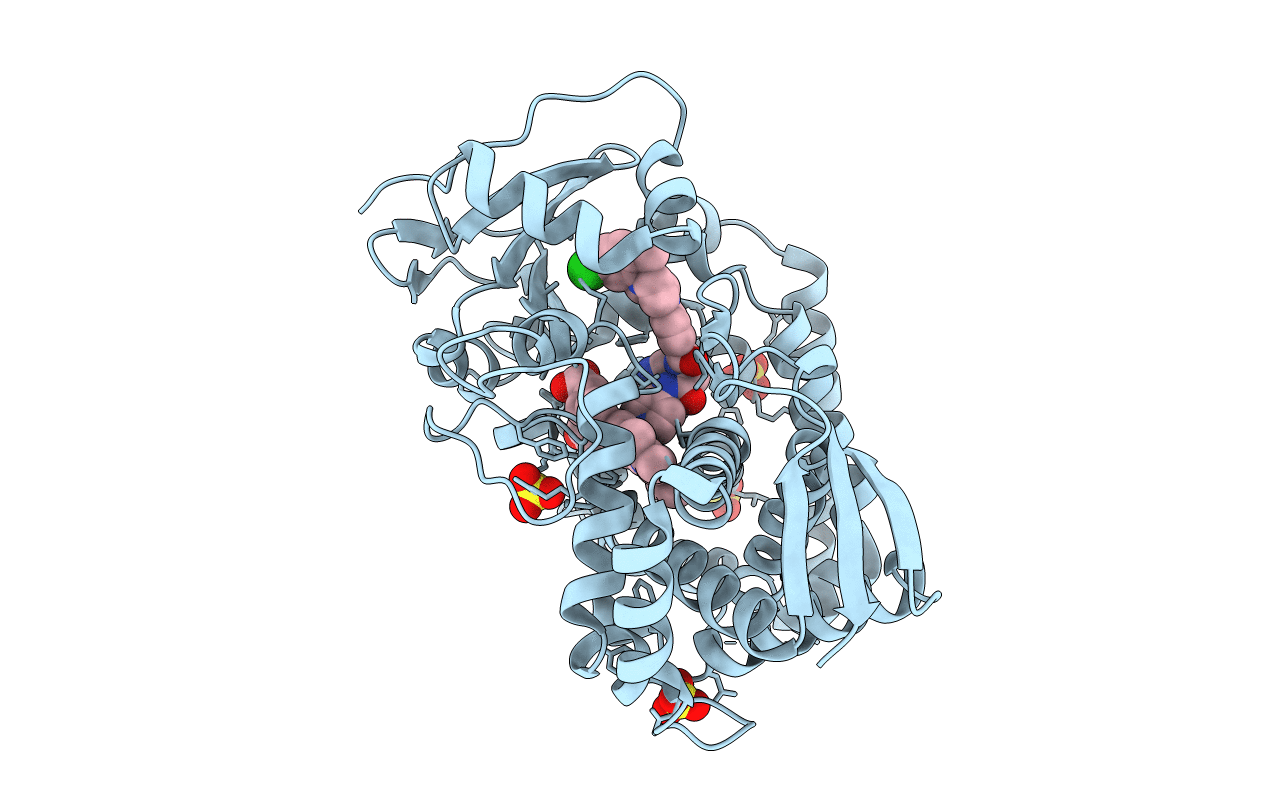
Deposition Date
2014-08-08
Release Date
2014-11-26
Last Version Date
2024-01-10
Entry Detail
PDB ID:
4UVR
Keywords:
Title:
Binding mode, selectivity and potency of N-indolyl-oxopyridinyl-4- amino-propanyl-based inhibitors targeting Trypanosoma cruzi CYP51
Biological Source:
Source Organism:
TRYPANOSOMA CRUZI (Taxon ID: 5693)
Host Organism:
Method Details:
Experimental Method:
Resolution:
2.48 Å
R-Value Free:
0.25
R-Value Work:
0.19
R-Value Observed:
0.19
Space Group:
P 63 2 2


